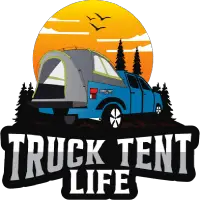Overlanding Specific Truck Bed Tents: Your Ultimate Guide to Rugged Adventures
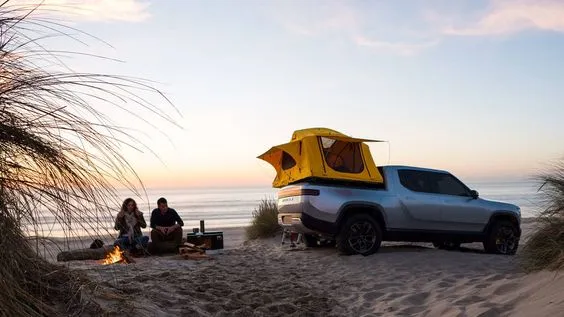
When planning an overlanding adventure, selecting the right tent size is crucial for comfort and functionality. Overlanding specific truck bed tents must balance space and portability, ensuring enough room for campers and their gear while fitting neatly onto the truck bed or roof rack without compromising vehicle maneuverability.
Start by considering the number of occupants and the type of gear you plan to bring. A smaller, more compact tent may be sufficient for solo adventurers or couples. These tents typically offer enough space for sleeping and storing essential gear, making them ideal for short trips or minimalist overlanders. Larger tents with multiple compartments or added vestibules are necessary for families or groups to provide adequate space and organization.
Another critical factor is the terrain and climate you will encounter. Overlanding tents designed for extreme conditions often feature reinforced structures, high-quality materials, and weather-resistant designs to ensure durability and protection against the elements. Look for tents with strong frames, waterproof fabrics, and efficient ventilation systems to keep you comfortable in various weather conditions.
Budget Pick

Umbrauto Truck Bed Tent
➤ Brand: Umbrauto
➤ Product Dimensions: 66.5″L x 65″W x 65″H
➤ Special Feature: Water-Resistant
➤ Occupant Capacity: 2
Budget Pick

DikaSun Pickup Truck Bed Tent
➤ Brand: DikaSun
➤ Product Dimensions: 7.9″L x 6.4″W x 6.2″H
➤ Water Resistance: 3000 mm
➤ Occupant Capacity: 2
Tailored for Exploration: Tent Options Designed for Overlanding Enthusiasts
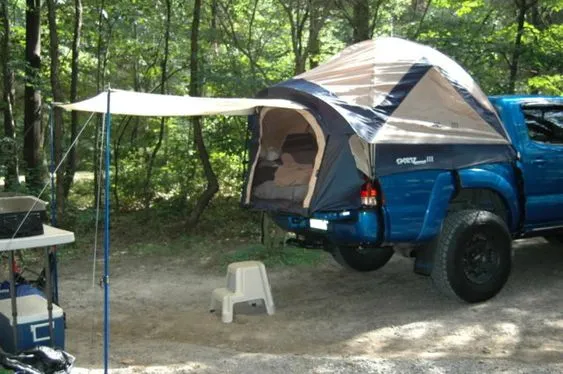
Overlanding-specific tents are designed to withstand the rigors of off-road travel. They feature robust materials, reinforced structures, and designs that cater to the needs of explorers. One popular option is roof-top tents, which provide an elevated sleeping area, offering safety from ground-level hazards and a quick setup. Roof-top tents are mounted on the roof racks of trucks or SUVs and can be deployed in minutes, making them a convenient choice for overlanders.
Ground tents, designed to fit on or beside truck beds, offer versatility and easy access to your vehicle. These tents often come with features such as annex rooms and extended canopies, providing additional living space and protection from the elements. Some models even include built-in mattresses or padded floors for added comfort.
Another option is hybrid tents, which combine the features of roof-top and ground tents. These tents can be mounted on the truck bed or used as standalone ground tents, providing flexibility depending on the terrain and campsite conditions. Hybrid tents are ideal for overlanders who require versatility and adaptability in their camping setup.
Ample Space for Adventure: Ensuring Roomy Accommodations for Overlanding Setups
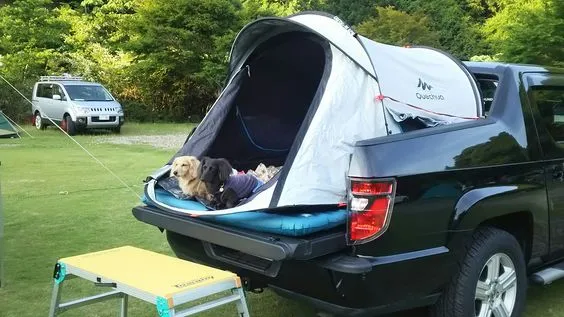
Space is a critical factor in overlanding setups. Your tent should provide enough room for sleeping, gear storage, and moving around comfortably. Look for tents with ample floor space, high ceilings, and multiple entry points to enhance convenience and accessibility. The tent’s layout should allow for easy organization of sleeping areas and gear, preventing clutter and maximizing comfort during your adventure.
For example, a tent with a large vestibule or annex can serve as a sheltered area for cooking, dining, or relaxing. These additional spaces are particularly useful in bad weather or when you need to keep gear dry. Some overlanding tents also feature separate compartments or rooms, providing privacy and designated areas for different activities.
Consider the tent’s overall footprint and how it will fit within your campsite. Ensure that the tent’s dimensions are compatible with your truck bed or roof rack and that there is enough space to set up the tent without interfering with other campsite elements. A well-planned layout will enhance your overlanding experience by providing a comfortable and organized living space.
Comfortable Quarters: Maximizing Interior Room for Overlanding Campers
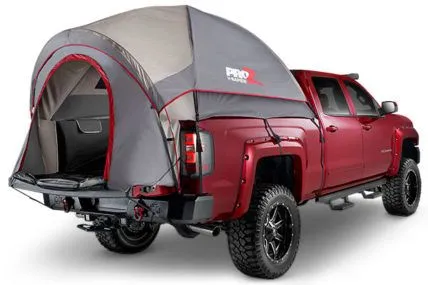
Maximizing interior space in Overlanding tents involves smart design and efficient use of the available areas. Consider tents with built-in storage pockets, gear lofts, and hang loops to keep essentials within reach and off the floor. These features help to keep the tent organized and free from clutter, making it easier to move around and find what you need.
Adjustable awnings and vestibules can create additional sheltered areas for cooking, relaxing, or storing gear. These extensions provide extra living space without taking up valuable floor space inside the tent. Look for tents with modular designs that allow you to customize the setup based on your needs and the available space.
A well-ventilated tent with multiple windows and vents will also enhance comfort by promoting airflow and reducing condensation. Proper ventilation is essential in varying weather conditions, preventing the tent from becoming stuffy or damp. Look for tents with mesh panels and adjustable vents that can be opened or closed depending on the weather.
Built for Exploration: Features to Enhance Comfort and Functionality in Overlanding Tents
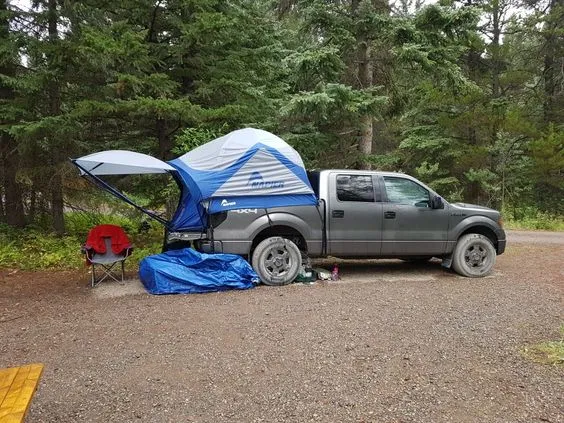
Overlanding-specific tents come equipped with features designed to enhance comfort and functionality. Look for tents with durable, waterproof materials, sturdy frames, and easy-to-use zippers and closures. These features ensure that the tent can withstand harsh conditions and frequent use, providing reliable protection and comfort during your adventures.
Integrated lighting systems, such as LED strips or lantern hooks, can provide convenient illumination inside the tent. These built-in lights eliminate the need for additional lanterns or flashlights, creating a more organized and functional living space. Some tents also include power outlets or USB ports for charging devices, adding to the convenience and comfort of your overlanding setup.
Consider tents with built-in awnings or sunshades to create sheltered outdoor spaces. These extensions provide additional protection from the sun or rain, allowing you to enjoy the outdoors comfortably. Look for tents with easy access points to your vehicle, making it simple to retrieve gear or supplies without leaving the shelter of the tent.
Sleeping Solutions for Overlanders: Tent Designs Ideal for Off-Road Travel
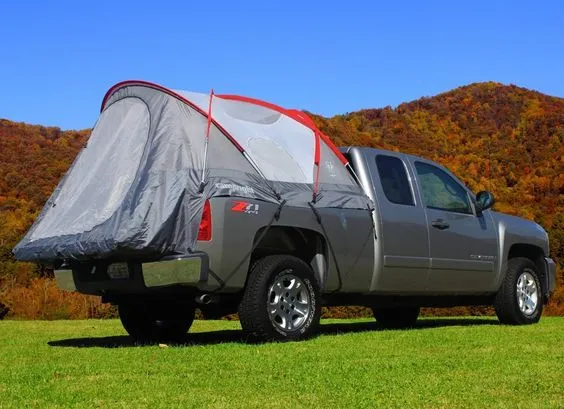
The ideal tent design for overlanders should offer a balance of comfort, durability, and ease of use. Roof-top tents provide an elevated sleeping area that keeps you safe from ground-level hazards and offers a quick setup. These tents often include built-in mattresses or padded floors, providing a comfortable sleeping surface without the need for additional sleeping pads or cots.
Ground tents designed for truck beds or adjacent setups offer versatility and easy access to your vehicle. These tents can be set up on the ground or mounted on the truck bed, providing flexibility depending on the terrain and campsite conditions. Look for tents with high-quality materials, robust frames, and features like insulated floors and rainfly for enhanced weather protection.
Hybrid tents combine the features of roof-top and ground tents, providing flexibility and adaptability for various Overlanding scenarios. These tents can be mounted on the truck bed or used as standalone ground tents, making them ideal for overlanders who require a versatile and customizable camping setup.
Spacious Retreats: Large Tent Options Perfect for Overlanding Expeditions
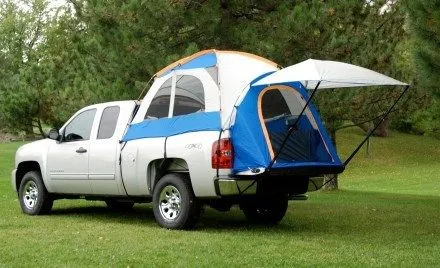
For overlanders traveling with family or groups, spacious tents are essential. Large tent options often include multiple rooms, vestibules, and annexes that provide ample space for sleeping gear storage, as well as living areas. These tents are designed to accommodate various occupants and their gear, ensuring that everyone has enough room to move comfortably.
Look for tents with high ceilings and wide footprints to ensure enough space for comfortable living. These tents should also be easy to set up and take down, with intuitive designs and clear instructions. Consider tents with modular configurations that allow you to customize the layout based on your needs and the available space.
Large tents with multiple entry points and separate compartments provide privacy and designated areas for different activities. These features are particularly useful for families or groups who need separate sleeping areas and common spaces for dining or relaxing. Ensure that the tent’s dimensions are compatible with your truck bed or roof rack and that there is enough space to set up the tent without interfering with other campsite elements.
Quick and Easy Setup: Assembly Techniques for Overlanding-Specific Tents
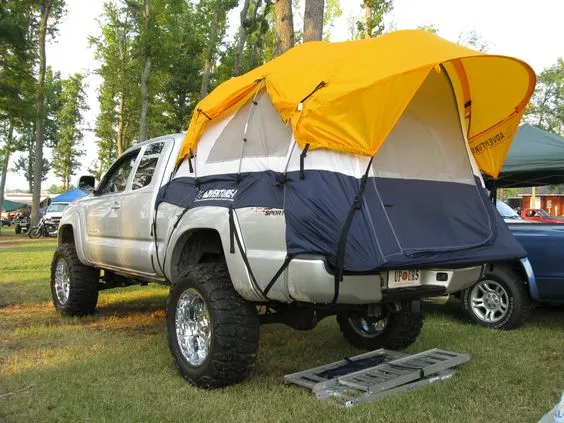
Efficient setup and takedown are crucial for overlanding-specific tents. Look for tents with color-coded poles, quick-release mechanisms, and simplified designs that allow for rapid assembly. Roof-top tents often feature fold-out or pop-up designs that can be set up in minutes, making them a convenient choice for overlanders.
Ground tents should come with clear instructions and minimal parts to ensure a hassle-free setup. Look for tents with pre-attached poles or quick-clip systems that simplify the assembly process. Practice setting up your tent before your trip to become familiar with the process and avoid delays during your adventure.
Consider tents with modular designs that allow you to customize the setup based on your needs and the available space. These tents can be configured to fit various cab dimensions and provide enough space for comfortable living. Look for tents with adjustable poles, multiple entry points, and modular configurations that can be tailored to your specific requirements.
Gear Storage Strategies: Organizing Space for Overlanding Equipment and Supplies
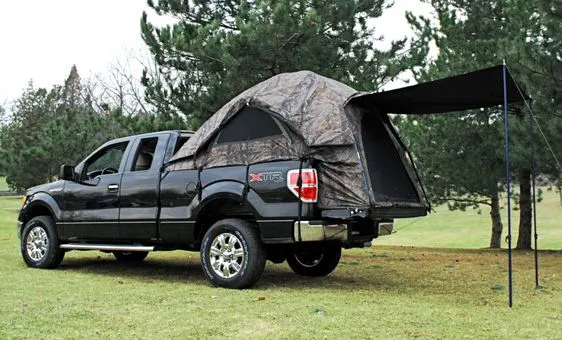
Effective gear storage is vital for overlanding trips. Choose a tent with multiple storage options, such as interior pockets, gear lofts, and external gear closets. These features help keep your living area organized and clutter-free, making it easier to find what you need and keep your gear protected from the elements.
Consider using storage bins or bags to keep smaller items organized and easily accessible. These containers can be stacked or stored under sleeping areas, maximizing the available space inside the tent. External storage solutions, such as roof racks or cargo carriers, can also provide additional space for bulky gear and supplies.
Look for tents with built-in storage solutions that keep essentials within reach and off the floor. These features help to keep the tent organized and free from clutter, making it easier to move around and find what you need. Adjustable awnings and vestibules can create additional sheltered areas for gear storage, keeping your living space organized and functional.
Choosing the Right Fit: Selecting a Tent Size Suitable for Overlanding Adventures
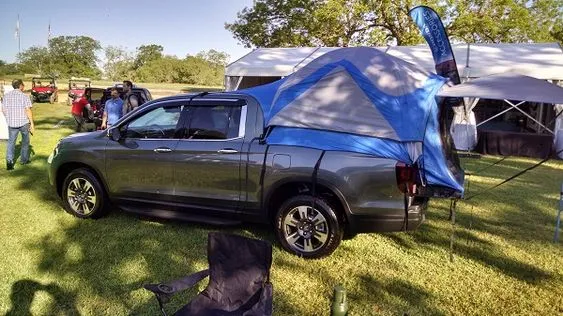
Selecting the right tent size for overlanding adventures involves considering your specific needs and preferences. Start by assessing the number of occupants and the type of gear you plan to bring. A smaller, more compact tent may be sufficient for solo adventurers or couples. These tents typically offer just enough space for sleeping and storing essential gear, making them ideal for short trips or minimalist overlanders. For families or groups, look for larger tents with multiple rooms or additional vestibules for storage.
Ensure the tent’s footprint and height fit within your vehicle’s dimensions and provide enough space for comfortable living. Consider the tent’s weight and packed size, especially if you plan to mount it on your vehicle’s roof rack. A well-balanced tent will provide the necessary space without significantly affecting your vehicle’s handling and fuel efficiency. Look for reviews and recommendations from other overlanders to find a tent that suits your specific needs and preferences.
As overlanding continues to gain popularity among adventurers, the variety of truck tents designed for these rugged journeys keeps expanding. Overlanding-specific designs prioritize durability, weatherproofing, and efficient use of space to accommodate long trips and harsh environments. While many of these designs cater to groups or families, there’s also a growing demand for more compact, efficient setups. This brings us to the next category of truck tents—those tailored for single occupants. These tents provide a perfect balance between mobility and comfort, making them ideal for solo travelers looking to minimize space without compromising on essential features.
Conclusion
Selecting the right overlanding-specific truck bed tent involves careful consideration of size, space, and functionality. Whether you’re a solo adventurer, a couple, or a family, choosing a tent tailored to your needs ensures comfort and convenience on the road. Look for features that enhance the overall camping experience, such as ample storage, quick setup, and durable materials. By prioritizing these elements, you can enjoy a comfortable and efficient overlanding adventure.
As you transition from overlanding adventures, understanding the compatibility of truck bed tents with extended cab setups can enhance your camping experience even further. Extended cabs offer additional interior space and unique challenges that require specific tent designs to maximize comfort and usability.
